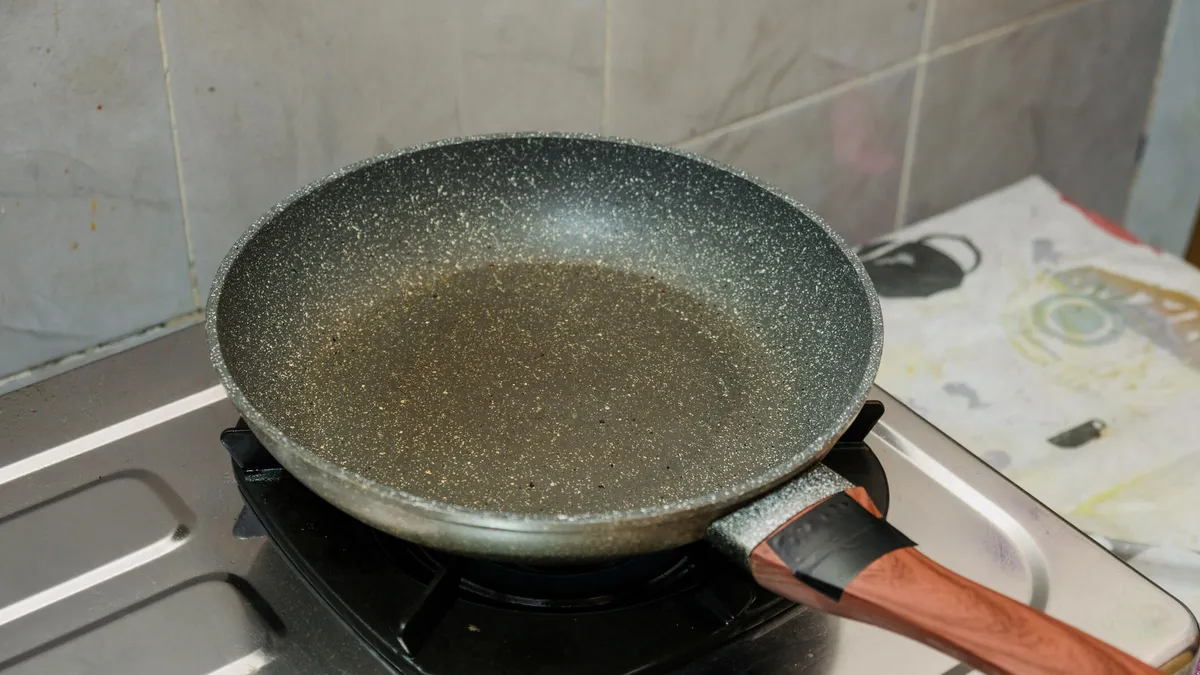Copyright CNET

Your nonstick pan has a role in your cooking rotation, but it also has limitations that many home cooks overlook. While that smooth surface excels at cooking delicate foods like eggs and pancakes, it's the wrong tool for other foods and cooking techniques. The issue comes down to heat and chemistry. Nonstick pans are designed for low to medium temperatures, so they can't achieve the high heat necessary for proper browning. When you try to sear a steak or chicken breast in a nonstick pan, you'll end up with pale, steamed meat instead of the caramelized, flavorful crust that develops through the Maillard reaction. That golden-brown exterior isn't just about appearance -- it's where much of the flavor lives. Beyond disappointing results, misusing nonstick pans can damage them. High heat and metal utensils gradually degrade the coating, shortening the pan's lifespan and potentially introducing coating particles into your food. We all love easy cleanup as much as the next bloke, but most of your culinary projects fare better in stainless steel, carbon steel or cast iron. These pans impart high surface heat, giving food char, depth and flavor development. I asked a career cooking teacher to compile the ultimate nonstick no-go list. Richard LaMarita is a chef-instructor of Health-Centered Culinary Arts at the Institute of Culinary Education in New York City. LaMarita describes nonstick cookware, including ceramic, as "niche." "Scrambled or fried eggs, pancakes and fried tofu are great for cooking in nonstick pans," LaMarita told me via email. "These sticky foods must come out completely without leaving remnants in the pan. Nonstick pans are popular, easy to clean and convenient, and I recommend every cook have one." So, what foods should never be cooked in nonstick cookware? Here's what Chef LaMarita says. Don't miss any of our unbiased tech content and lab-based reviews. Add CNET as a preferred Google source. 1. Most meat and fish First are foods that require or desire searing on the outside. When you're looking for a deep, caramelized crust with good color, such as on a steak, chicken breast, or a piece of salmon, you won't get the color you want from a nonstick pan. Nonstick is not made to tolerate the high heat required to achieve the desired crust, and its surface is not geared toward developing that crust because of the coating on the pan. 2. Most vegetables Much like meat, vegetables need a little char for maximum flavor, and you just won't get it with a nonstick pan. For zucchini, carrots, onions, asparagus and bok choy, reach for a stainless-steel or cast-iron skillet for best results. 3. Food you want caramelized Do you know about fond? It's the caramelized, crusty bits of food left on the pan after searing, and it's the key to big flavor (and happiness). Fond is used to make pan sauces. Items are seared first, then picked up, and those beautiful, tasty bits of food are incorporated into the sauce. For making fond, a nonstick pan will not serve you. There is simply not enough surface heat. 4. Acidic foods Cooking highly acidic foods in nonstick pans is not a good idea. Acidic foods include a tomato sauce, or a dish with a high ratio of vinegar in the pan, such as a braised cabbage, or if there is lemon juice in the cooking process. "Ratatouille is one dish I wouldn't cook in a nonstick," LaMarita says. "The acids in this recipe and others will corrode the delicate nonstick surface over time." 5. Stir-fry, soups, sauces Along the same lines of wearing down the surface, refrain from cooking foods or dishes that require a fair amount of stirring. A stir-fry, sauce or a dish that demands a lot of tossing and mixing could wear down the surface quickly. "I find that nonstick surfaces wear down eventually, even with proper use, so why speed up that process?"



